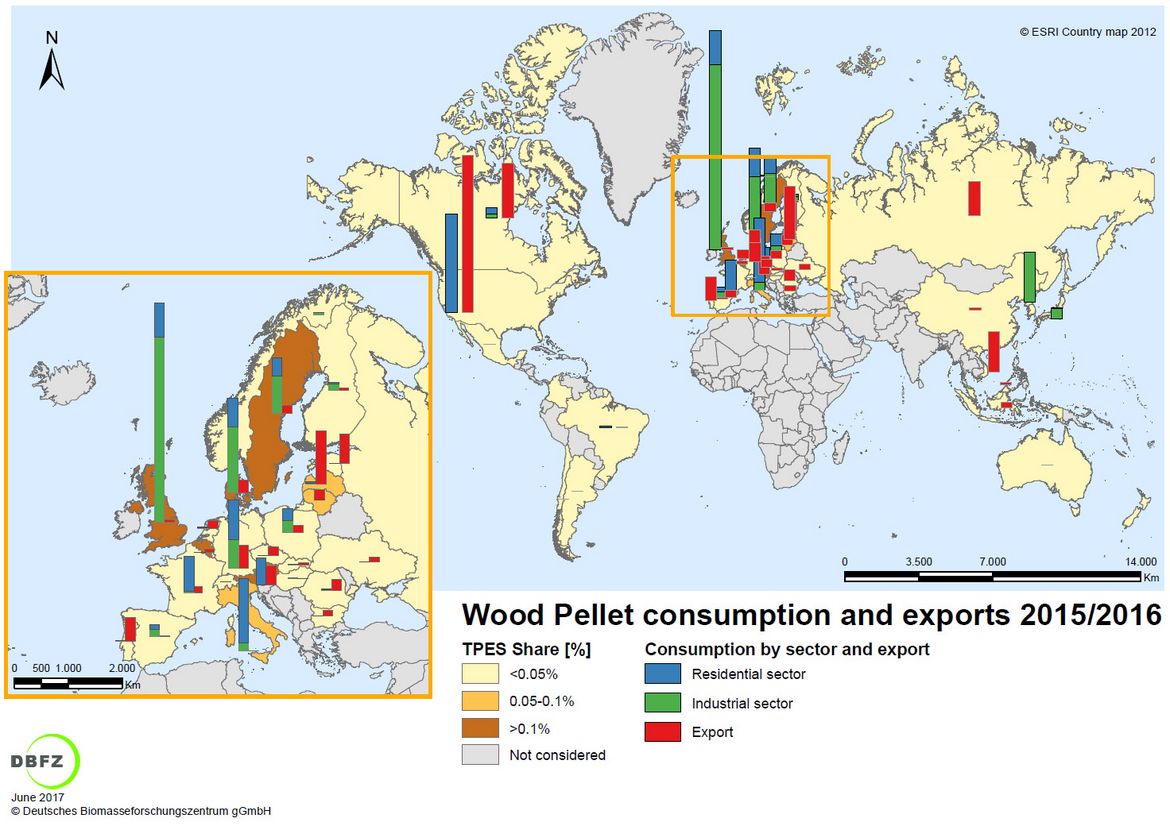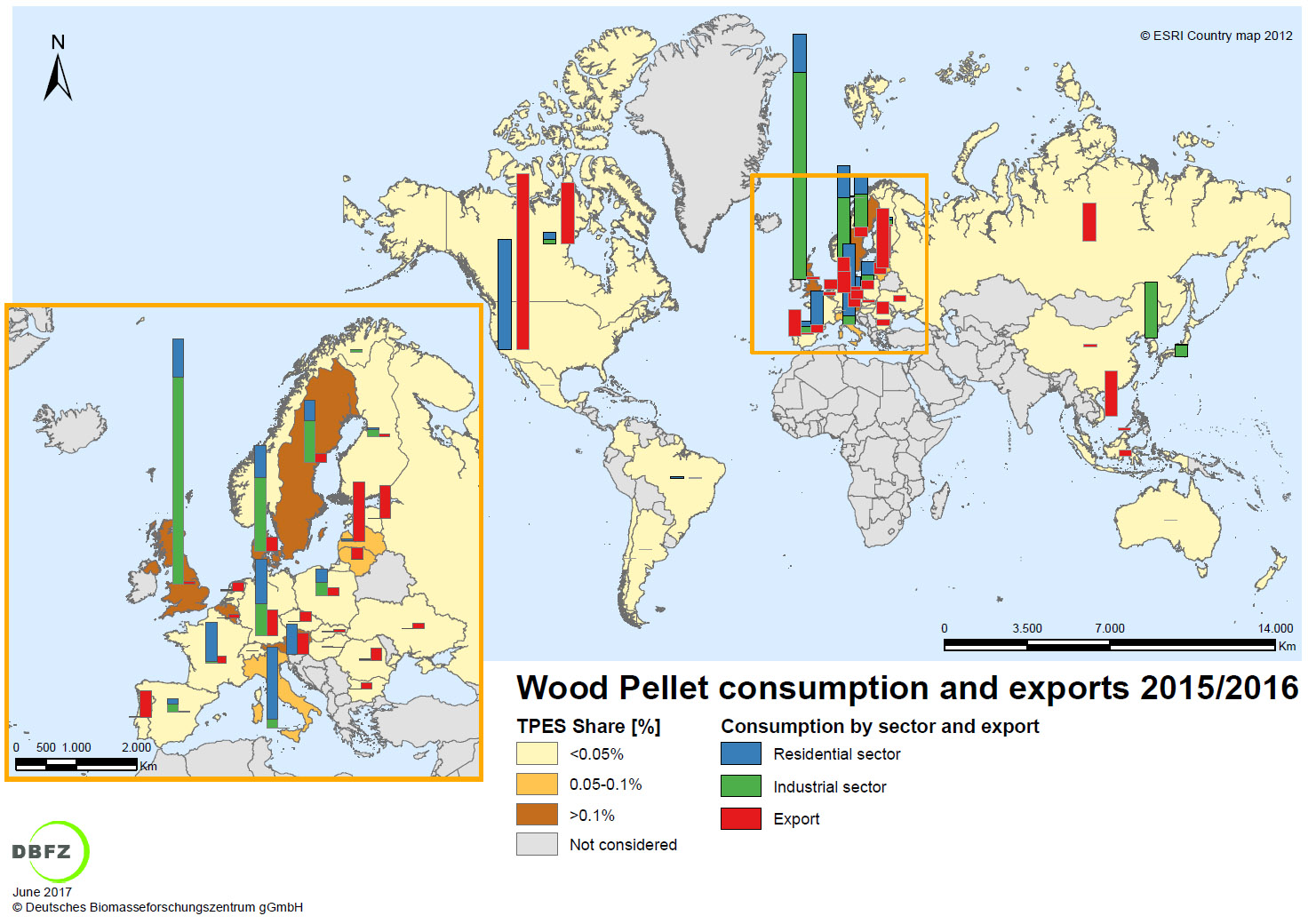DBFZ work out IEA study on wood pellet market in more than thirty countries
A study conducted for the International Energy Agency (IEA) provides a comprehensive inventory of the wood pellet industry and the markets more than 30 countries in terms of regulatory frameworks, production capacities, consumption and price development, trade, logistics as well as country-specific standardization. The study can be obtained free of charge in English at www.ieabioenergy.com.
Driven by rising demand, the global production of wood pellets has risen rapidly over the last ten years. While the production volume in 2006 was estimated at 6-7 megatons (Mt), it already exceeded 26 Mt in 2015/2016. Further growth in demand is expected in the coming years for applications in two market segments. On the one hand, certified wood pellets are burned in coal-fired power stations and in converted coal-fired power plants to reduce greenhouse gas emissions during the generation of electricity. On the domestic side, wood pellets are used as a solid fuel mainly in automated furnaces and boilers. In the future, according to the assessment of the authors, wood pellets could also represent a renewable resource for "green chemistry" and biobased materials.
European Union as region is the largest pellet producer in the world
Due to an increasing demand, especially in Europe, the EU as region was by far the largest producer of wood pellets (54% by 2015), followed by North America (2015: 35%). Canada recorded the world's most dynamic development and was able to increase exports from 1.6 Mt in 2015 to 2.4 Mt in 2016. Seen on a country-by-country basis, the United States clearly dominates pellet production with 7.4 Mt in 2015 and 6.3 Mt in 2016, but is faced with a growing competition from Europe, Russia and the Baltic States. Other major producers are Germany with 2.2 Mt and Sweden with 1.5 Mt. Asia, the Russian Federation, Australia and Latin America play even smaller roles in global pellet production (2015: 11%), but are growing. In terms of national pellet consumption, the United Kingdom was at 6.7 mt, followed by the United States (2.8 mt) and Italy (2.1 mt).
Download
The entire report (243 pages) is available free of charge in English under the following link as a PDF download: www.ieabioenergy.com
Smart Bioenergy – innovations for a sustainable future
The DBFZ works as a central and independent thinker in the field of energy and material use of biomass on the question of how the limited available biomass resources can contribute to the existing and future energy system with sustainability and high efficiency. As part of the research the DBFZ identifies, develops, accompanies, evaluates and demonstrates the most promising fields of application for bioenergy and the especially positively outstanding examples together with partners from research, industry and public. With the scientific work of the DBFZ, the knowledge of the possibilities and limitations of energy and integrated material use of renewable raw materials in a biobased economy as a whole should be expanded and the outstanding position of the industrial location Germany in this sector permanently secured – www.dbfz.de/en.


